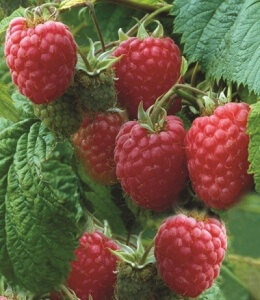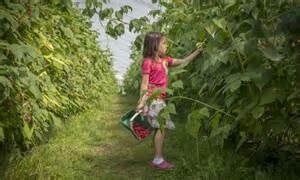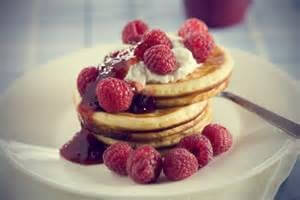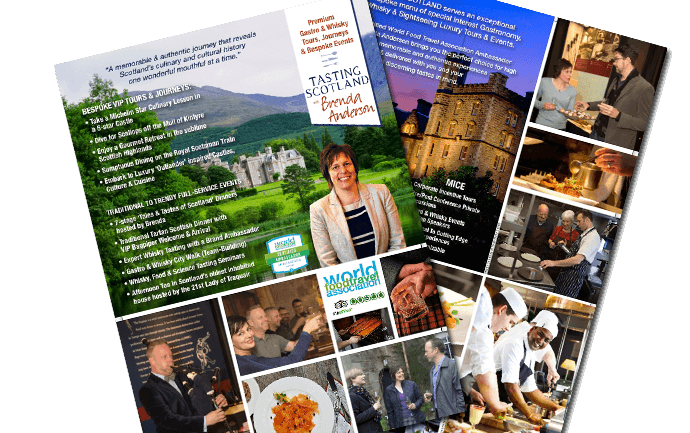Year of Food and Drink Scotland 2015 – July’s Jewels
Sweet, finely perfumed, moderately tart, red, yellow, amber-coloured or white, the Scottish raspberry shines like the jewel it is. From a pop-up roadside stall to a Michelin star restaurant, we look at why these edible diamonds are truly in the words of Michelin ‘worthy of a detour’.
Despite their probable East Asia origins, the East of Scotland and in particular the regions of Fife, Angus and Perthshire have years of experience in growing premium soft fruits. It is no surprise that in this the ‘Year of Food and Drink’ in Scotland the focus of celebration in July is ‘Summer Fruits and Berries’. And it will also come as no surprise to you that in the summer months on our food tours we will insist on finding the freshest, best tasting berries for you to try.
The raspberry is a member of the Rose family of plants along with strawberries, blackberries, tayberries (a cross between black and rasp-berries), and interestingly pears, plums and peaches. It is rather bizarrely a distant cousin of almonds. 
As is the case with the growing of vines, the terroir; the relationship between the soil, climate, typography and tradition all play a part. The West of Scotland is simply too wet, and again like vines, the rasp roots do not like wet feet. A well-drained, fertile loamy soil is ideal. As is the long daylight hours we enjoy in our summer and a moderate climate sitting around the mid 60’s. Go 20 degrees higher and the faster ripening comes at a great cost – the loss of sweetness and flavour.
Also lost are some of the fruits exceptional health benefits. Rich in Raspberry Ketone (a Phytonutrient) the majestic rasp can help decrease the risk of obesity and fatty liver disease. It provides a good source of Vitamin C, is high in Fibre and has excellent anti-flammatory benefits. One of our most popular stops on the Tasting Scotland Self-Drive Tours is at Craigies Farm, where the Sinclair family grow top quality soft fruits and provide a great place for pick your o wn as well as making their own range of delicious jams.
wn as well as making their own range of delicious jams.
As has been the case for many years, where there is fruit there is a need to do something with it and preferably quickly. The esteemed Scottish food writer, Catherine Brown, in her book ‘Broths to Bannocks’, gives reference to Mrs Dalgairns recipe for Raspberry Cream, from her recipes of 1829 in the ‘Practice of Cookery’. It starts ‘Gather the fruit upon a dry day, mash and drip it through a jelly-bag’.
My grandmother and mother also cooked the only way they knew how; with the seasons. Along with my younger brother and sister, as teenagers growing up in the east of Scotland, 80% of the annual six week summer holidays were spent picking raspberries and strawberries for pocket money (and fun). I recall ‘jam days’ when fruit of varying sizes could be picked and so an extra £1 or 2 would be the reward at the end of the day. The worst earning days were ‘Marks and Spencers’ days when only the biggest and best would do! Each of us would fill our empty lunch boxes at the end of the day with a selection of super sweet berries for mum to make jam. Couple that with freshly baked Scotch Pancakes (which we knew as bannocks) and you’d be grinning from ear to ear.

With food being the only medium in the world in which we use all our senses, a momentary sniff and the slightest glance of a perfect punnet filled to the brim with ripe fruit takes me back over 30 years. In the face of climatic changes the world over let’s hope these diamonds of the Scottish summer are indeed forever.
Tastefully yours, Brenda
Brenda Anderson is the Founding Director of ‘Tasting Scotland’, Scotland’s premier culinary and food tour operator. For more information on customising a unique culinary tour of Scotland contact Tasting Scotland at info@tastingscotland.com




